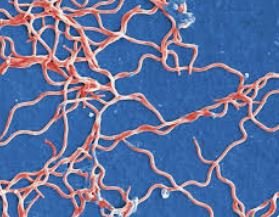
Babesiosis: A Common Vector Borne Co-Infection with Neurologic Symptoms
Besides Lyme-causing Borrelia, many ticks carry other pathogens called coinfections. Babesia, a malaria-like parasite infecting red blood cells, causes babesiosis. It spreads via vector bites, blood transfusions, and possibly congenital transfer. Babesiosis cases have been found in all 50 states. Risk is linked to bites from ticks, mites, lice, fleas, or flies. Children and young adults are more vulnerable due to outdoor activities. Early Babesia infection in children can lead to misdiagnosis. Adolescents with sudden or gradual neurological or behavioral symptoms risk being wrongly diagnosed with mental illness without infection testing.
About 40% of Lyme disease patients may also have Babesia, though cases are likely underreported. Symptoms range from mild or none to severe or life-threatening. Signs include sudden or cyclical "malaria-like" symptoms: headaches, vertigo, and heavy night sweats.
No FDA-approved tests currently screen blood donors for Babesia, according to the CDC. Babesiosis is the most common transfusion-related parasitic infection in the U.S. Available serum tests for Babesia, Bartonella, and Borrelia are unreliable.
Early vs. Late Babesia Disease Symptoms: What to Watch For!
-
Flu-like onset: fever, chills, sweating, fatigue, headache
Muscle aches and generalized body pain
Air hunger or shortness of breath disproportionate to activity
Dizziness or lightheadedness
Dark urine or mild jaundice (from red blood cell breakdown)
Anxiety, irritability, or low mood
Sleep disturbances and early fatigue
Nausea or loss of appetite
-
Persistent low-grade fevers or night sweats
Shortness of breath, chest pressure, or air hunger with minimal exertion
Worsening fatigue and exercise intolerance
Migratory muscle or bone pain
Cognitive dysfunction (“Babesia brain”) with poor focus and memory lapses
Mood instability, anxiety, or panic sensations
Anemia or low platelets on lab testing
Heart palpitations or irregular heartbeat
Drenching night sweats alternating with chills
-
Severe, relapsing fevers and drenching sweats
Marked anemia and low oxygen delivery leading to profound exhaustion
Dyspnea, air hunger, and chest tightness even at rest
Neurovascular dysfunction: dizziness, syncope, POTS-like symptoms
Cognitive decline, confusion, disorientation, or hallucinations
Encephalopathy and sleep-wake reversal
Severe mood lability, panic attacks, depression, or emotional blunting
Autonomic instability with blood pressure and heart rate fluctuations
Coagulopathies (abnormal clotting) or vascular inflammation
Multisystem involvement when combined with Lyme or Bartonella (neurocardiac, immune, and mitochondrial dysfunction)
Cyclical symptom flares every few days (linked to Babesia replication cycle







